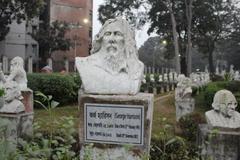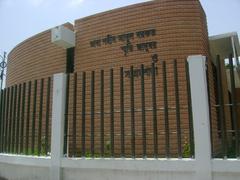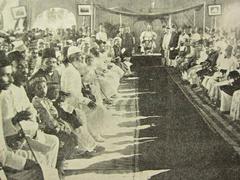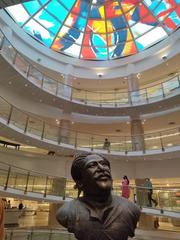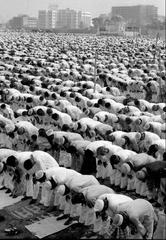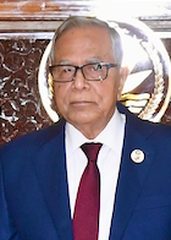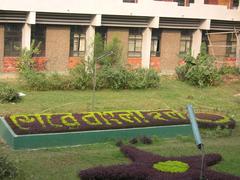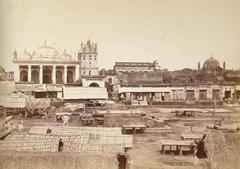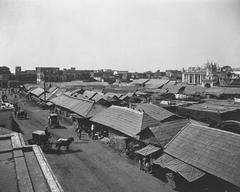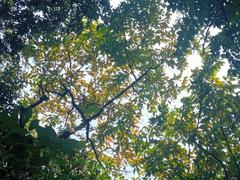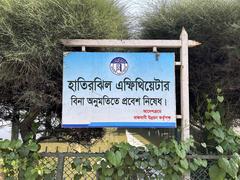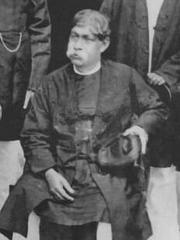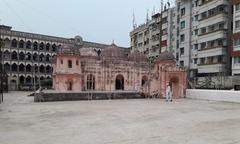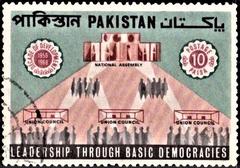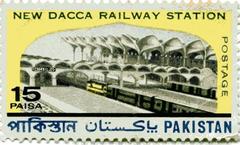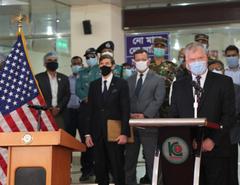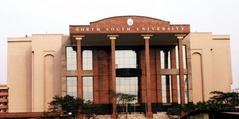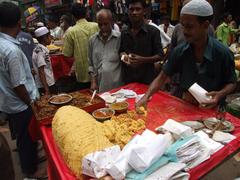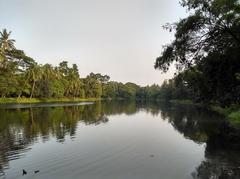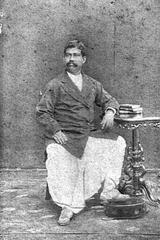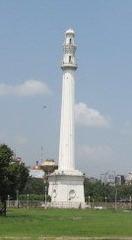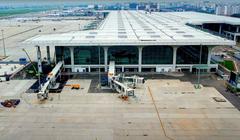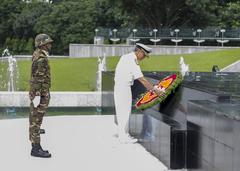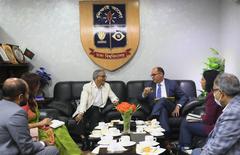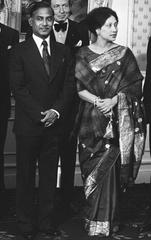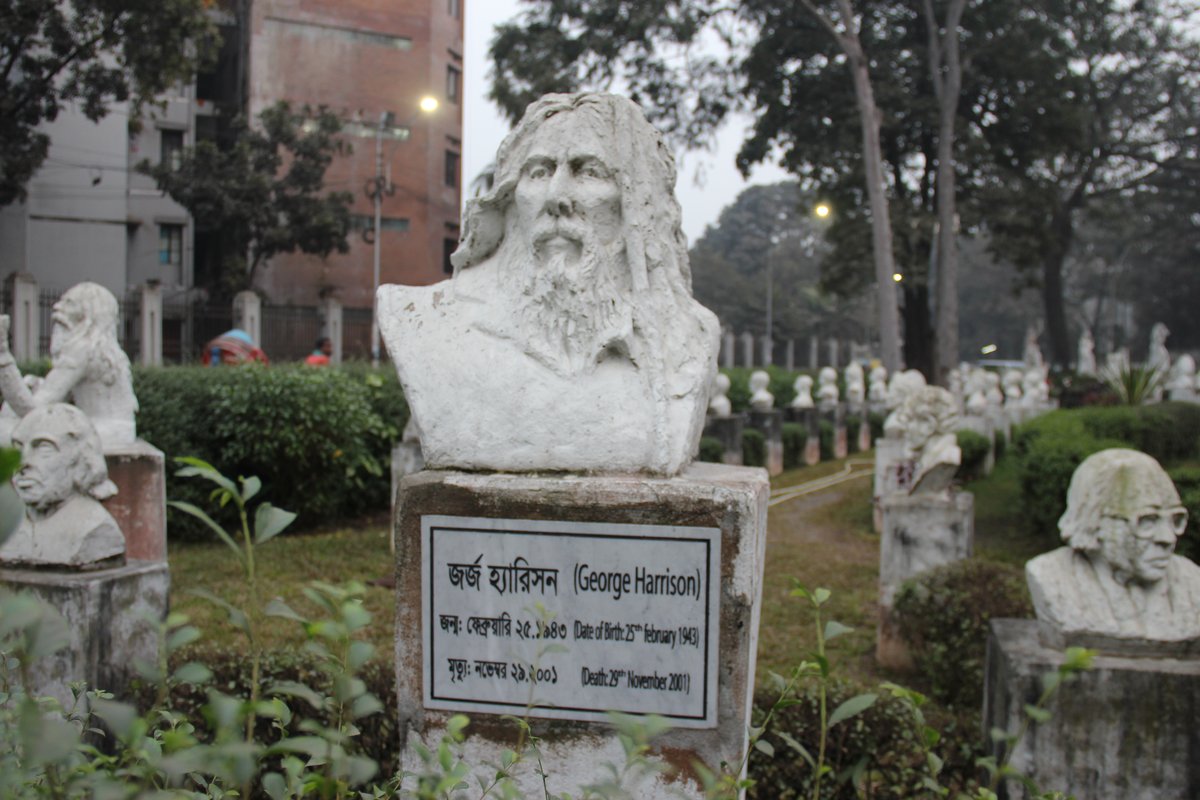
Shadhinotar Shonggram Visiting Hours, Tickets, and Dhaka Historical Sites Guide
Date: 14/06/2025
Introduction
Dhaka, the energetic capital of Bangladesh, is a city steeped in history—its streets and monuments bearing witness to the nation’s struggle for independence. Central to this legacy is Shadhinotar Shonggram (“Struggle for Independence”), a monument that, along with landmarks such as the National Martyrs’ Monument and Shaheed Minar, commemorates the sacrifices made during the Liberation War of 1971. Visiting these sites is not just an act of remembrance but an immersion into the rich cultural tapestry and enduring spirit of Bangladesh.
Whether you are a local or an international traveler, this guide provides comprehensive, non-repetitive information about the history, significance, visiting hours, ticketing, accessibility, travel tips, and nearby attractions related to Shadhinotar Shonggram and key historical sites in Dhaka.
Table of Contents
- Historical Context of Shadhinotar Shonggram
- Symbolic and Cultural Significance
- Key Dhaka Historical Sites
- Visiting Information
- Visitor Experience
- Nearby Attractions and Accommodation
- Emergency Information
- Frequently Asked Questions (FAQ)
- Conclusion and Recommendations
- Sources
Historical Context of Shadhinotar Shonggram
Shadhinotar Shonggram encapsulates Bangladesh’s arduous journey to independence. Its roots trace back to the Bengali Language Movement of the 1950s, which asserted the cultural rights of Bengalis in the face of political and linguistic suppression (Medium). Subsequent decades saw mass movements that built momentum toward autonomy, culminating in the 1971 Liberation War. The war’s defining moments unfolded in Dhaka, including Sheikh Mujibur Rahman’s historic speech at Suhrawardy Udyan and the Pakistani army’s surrender at the same site (Beautiful Bangladesh).
Symbolic and Cultural Significance
National Identity and Collective Memory
Shadhinotar Shonggram is integral to Bangladesh’s sense of self. Annually, Independence Day (March 26) and Victory Day (December 16) are marked by ceremonies, cultural performances, and tributes at the monument and across the nation (Medium). Literature, music, and visual arts inspired by the events of 1971 continue to shape national consciousness.
Political and Social Impact
The struggle for independence transcended religious and regional boundaries, fostering a sense of unity that continues to influence civic activism and democratic movements in modern Bangladesh (Medium).
Key Dhaka Historical Sites
National Martyrs’ Monument (Jatiyo Smriti Shoudho)
- Location: Savar, 35 km northwest of central Dhaka
- Significance: Symbolizes the seven stages of the struggle for independence through seven concrete structures (Tourist Places BD; Wikipedia)
- Visiting Hours: Daily, 9:00 AM–5:00 PM
- Entry Fee: Free
- Facilities: Gardens, rest areas, ramps for wheelchairs
- Guided Tours: Available on request (Evendo)
Shaheed Minar
- Location: Near Dhaka University
- Significance: Commemorates martyrs of the 1952 Language Movement; central to International Mother Language Day on February 21 (Mapcarta)
- Visiting Hours: Open 24 hours
- Entry Fee: Free
- Best Times: Early morning or late afternoon for reflection and photography
Other Notable Locations
- Shadhinotar Shonggram Monument: In Suhrawardy Udyan, site of pivotal events in the independence movement (wanderlog.com)
- Liberation War Museum: Offers exhibits, artifacts, and guided tours on the 1971 war (onemileatatime.com)
- Dhakeshwari National Temple, BUET Old Academic Building: Important for cultural and student activism (Mapcarta)
Visiting Information
Hours and Tickets
-
Shadhinotar Shonggram (Suhrawardy Udyan):
- Open daily, 9:00 AM–6:00 PM
- Entry is free for all visitors
- Special events with extended hours on national holidays
-
Liberation War Museum:
- Saturday–Thursday, 10:00 AM–5:00 PM (closed Friday)
- Tickets: ~40 BDT for adults; discounts for students/groups
-
National Martyrs’ Monument:
- Open daily, 9:00 AM–5:00 PM
- Entry is free
Accessibility and Facilities
- Transport: Easily reached by taxi, ride-sharing apps, rickshaw, or public bus. From the city center, expect 30–90 minutes’ travel, depending on traffic (travellikeaboss.org).
- Facilities: Restrooms, snack vendors, shaded seating, and paved, wheelchair-accessible paths (some uneven surfaces may exist).
- Parking: Limited—public transport or ride-sharing is recommended.
Guided Tours and Interpretation
- Guided Tours: Optional at most sites; available in English and Bengali.
- Local guides at Shadhinotar Shonggram for a modest fee
- Museum and monument tours can be arranged through official channels or local operators (bangladeshscenictours.com)
Travel Tips
- Best Time to Visit: November–February for pleasant weather; early morning or late afternoon for comfort and lighting (makemytrip.com)
- Dress Code: Modest attire recommended for all visitors
- Safety: Dhaka is generally safe; take standard precautions and use trusted transport (travellikeaboss.org)
- Health: Carry bottled water; tap water is not safe to drink. Use sunscreen and insect repellent.
Visitor Experience
The atmosphere at Shadhinotar Shonggram and other historical monuments is contemplative and respectful. On regular days, the parks and monuments are peaceful, ideal for reflection, photography, and learning. During national holidays, expect vibrant ceremonies, cultural performances, and large crowds. Informational plaques and occasional guided tours enhance the educational value.
Photography:
The monuments are especially photogenic at sunrise, sunset, and when illuminated at night. Always seek permission before photographing individuals, especially during events.
Nearby Attractions and Accommodation
Nearby Attractions
- Liberation War Museum
- Central Shaheed Minar
- Bangladesh National Museum
- Dhakeshwari National Temple
- Tara Masjid
- Ahsan Manzil (the Pink Palace)
- Lalbagh Fort
- Sadarghat River Port
Many of these can be combined in a day’s itinerary (iwandered.net).
Accommodation
For safety and convenience, stay in neighborhoods like Gulshan, Banani, or Dhanmondi, which offer a range of hotels, restaurants, and amenities (makemytrip.com). Top recommended hotels include Le Méridien Dhaka, Hotel Sarina, and Hotel Lake Castle.
Emergency Information
- Police and Emergency: Dial 999
- Tourist Police: Present at major sites
- Embassy Contacts: Keep your embassy’s info handy
- Hospitals: Several are located near central Dhaka
In emergencies, seek assistance from uniformed personnel or staff at reputable establishments (travellikeaboss.org).
Frequently Asked Questions (FAQ)
Q: What are the visiting hours for Shadhinotar Shonggram?
A: Daily, 9:00 AM–6:00 PM. Some areas are accessible 24/7, but museums/visitor centers usually follow standard hours.
Q: Is there an entry fee?
A: Most outdoor monuments are free; museums may charge 20–50 BDT (locals) or 300–500 BDT (foreigners) (citytravelerbd.com).
Q: Are guided tours available?
A: Yes, at most major sites. Book in advance or hire local guides on-site.
Q: How accessible are the monuments to people with disabilities?
A: Most have paved, wheelchair-friendly paths; some uneven surfaces may exist.
Q: When is the best time to visit?
A: November–February for comfortable weather and smaller crowds.
Q: Are there safety concerns?
A: Dhaka is generally safe; use standard urban precautions.
Conclusion and Recommendations
Exploring Shadhinotar Shonggram and related historical sites in Dhaka is a deeply rewarding experience. These monuments stand as living testaments to the courage, unity, and resilience of the Bangladeshi people. By planning your visit—considering opening hours, accessibility, and cultural etiquette—you will ensure a respectful and informative journey.
For enhanced experiences, engage local guides, attend commemorative events, and explore the city’s nearby cultural landmarks. To stay updated on visiting hours, special events, and more, download the Audiala app and follow official tourism channels.
Including high-quality images with descriptive alt text such as “Shadhinotar Shonggram monument at sunset” and using interactive maps can further enrich your visit.
Sources
- Bangladesh Gurukul: History of Dhaka
- Taylor & Francis: Old Dhaka
- Unusual Traveler: Bangladesh Dhaka Travel Guide
- Beautiful Bangladesh: Landmarks of Dhaka
- Wikipedia: National Martyrs’ Memorial
- Discover Walks: Facts about Bangladesh National Martyrs Memorial
- Trip101: Best Things to Do in Dhaka
- Facts.net: 40 Facts About Dhaka
- Medium: Shadhinota Dibosh
- Tourist Places BD: National Martyrs’ Monument
- Evendo: National Martyrs’ Monument
- Mapcarta: Shaheed Minar
- Wikipedia: Tourism in Bangladesh
- travellikeaboss.org: Is it Safe to Travel to Dhaka?
- wanderlog.com: Most Historic Buildings and Sites in Dhaka City
- makemytrip.com: Places to Visit in Dhaka
- onemileatatime.com: Visiting Dhaka Bangladesh
- iwandered.net: Dhaka Itinerary
- citytravelerbd.com: Ahsan Manzil
- bangladeshscenictours.com: Tourist Attractions in Dhaka
- nijhoom.com: Bangladesh Visa on Arrival
- weather2travel.com: Bangladesh Weather
- weather25.com: Dhaka Weather
